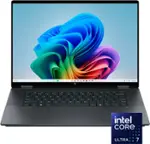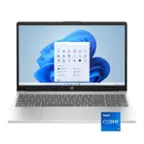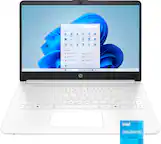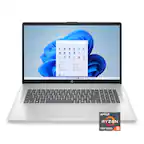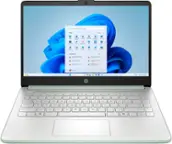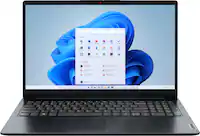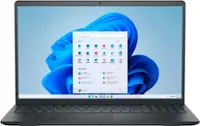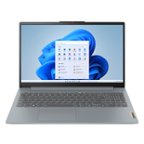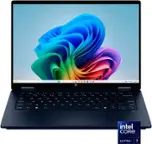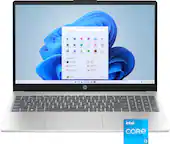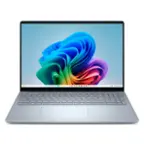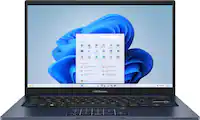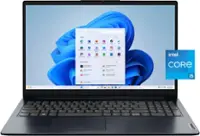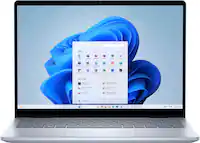Questions & Answers
- Model:
- Q425MA-U71TB
- |
- SKU:
- 6568761
Highly rated by customers for: Battery Life, Processor Speed, Weight
$839.99Your price for this item is $839.99
Clearance
Save $210
Comp. Value: $1,049.99
The comparable value price is $1,049.99
Page Showing 1-20 of 95 questions
Q: QuestionDoes this ASUS Zenbook laptop have a touch screen?
- A:Answer Yes, the Zenbook 14 OLED has a touch screen.
This question and answer was generated by AI based on customer and product data.Q: QuestionWhat type of graphics card does this ASUS laptop use?
- A:Answer This ASUS Zenbook uses an integrated Intel Arc Graphics card.
This question and answer was generated by AI based on customer and product data.Q: QuestionWhat operating system does the ASUS Zenbook 14 come with?
- A:Answer The ASUS Zenbook 14 comes with the Windows 11 Home operating system.
This question and answer was generated by AI based on customer and product data.Q: QuestionWhat is the maximum battery life of this ASUS laptop?
- A:Answer This ASUS laptop boasts a battery life of up to 15 hours.
This question and answer was generated by AI based on customer and product data.Q: QuestionWhat is the screen size of this ASUS laptop?
- A:Answer This ASUS laptop has a 14-inch screen.
This question and answer was generated by AI based on customer and product data.Q: QuestionHow much RAM does this ASUS Zenbook laptop have?
- A:Answer This ASUS Zenbook laptop comes with 16GB of LPDDR5x RAM.
This question and answer was generated by AI based on customer and product data.Q: QuestionHow much storage space does the ASUS Zenbook have?
- A:Answer The Zenbook comes equipped with a 1TB SSD.
This question and answer was generated by AI based on customer and product data.Q: QuestionIs this laptop is best for college students, and an software engineer can use it ,as well as is this laptop is helpful for studying in data science and cyber security / in All IT sector and or can I go for R9 Hs series processor ,
Asked by Anonymous.
- A:Answer You mention R9 HS so I’ll respond from the perspective of a software engineer/data scientist/AI engineer - I like this Asus laptop a lot for basic browsing, YouTube playing, MS Office (in fact, as I write this, it’ on a sale discount and I’m considering buying one for home. Also, if you want an Intel Core Ultra (Meteor Lake gen) laptop then this Core Ultra 7 155H CPU is the one I recommend (since the fastest Core Ultra 185H costs about $200 more just for the CPU part of the price and is only 20% faster). And this model with the Ultra 7 155H will certainly get you through Fresh/Soph years of IT or Computer Science classes. But if I were buying a laptop for full-blown data science/software engineering and wanted it to last 4 years, I’d prefer a laptop with a R9 7940HS or 8940HS or 8945HS 8-core CPU. Asus makes lots of models containing these. They are not only 25% faster in terms of Computing Power (that is, how much can you compute with all 8 cores running at once), but also all 8 cores are fast Performance cores that are hyperthreaded as well, giving you 16 runnable threads. This also means you don’t have to deal with the much slower Efficiency cores of Intel. Do not be fooled by the marketing trick that Intel plays on us all with the Core Ultra Meteor Lake CPUs. In order to get longer battery life (admirable - so far anyway) they intentionally put a bug into the process scheduler (I call it a bug anyway) such that you first have to use up all 2 of your Very Low Power Very Low Frequency (in othet words pretty much useless) Efficiency cores, and then you have to use up all 8 of your regular (low frequency but not very low) Efficiency cores, before it will let you us any of your Performance cores at all. This means you have to simultaneously run one or more programs containing 11 threads before it will finally let you run that 11th thread on one of your 6 Performance cores. And even then the rest of your P cores sit idle until you get to 12 to 22 threads running at once. But except for some games, it is rare that programs are written so parallel that they run in 10 or more threads. Thus, if you’re only running one program at a time and it’s not a game, you are almost never ever using the fastest 6 Performance cores that you bought and paid for (another reason not to get the Ultra 9 185H CPU). Because of this deliberate Scheduler bug, you are paying for but almost never using the 6 Performance cores, and your response time is proportionally slower by having been forced to use the Efficiency cores instead. However that saves a lot of electric juice so you get longer battery life. For most people running undemanding applications, that’s a pretty good tradeoff (yet they can still run a demanding game once in a while. But it’s a bad deal for a computer science/data science student - because you’re forcibly having to pay the penalty of almost everyhing running twice as slow, so that all your friends with the same Meteor Lake laptop can have 2x the battery life. Oh by the way, the latter was your first Computrr Science lesson.
Answered by Anonymous
Q: QuestionFor clarification, is this processor the Intel Core Ultra 7 processor 155H 16-Core processor? If not what is it, precisely? Does it have a number designation?
Asked by Lenny.
- A:Answer Yes this model contains the Intel Core Ultra 7 155H CPU, which (as of June 2024) is in the Core Ultra series of newest Meteor Lake laptop CPUs. This is the third from the top in that lineup. If you’re dead set on buying a laptop with an Intel CPU, I recommend this 155H CPU as the best value per dollar (and this particular Asus model does look like a good implementation). Why? Any lower CPU and they typically don’t give you enough memory. It still has 6 Performance cores just like the top-end Ultra 185H. Just clocked a bit slower. However, performance data shows that the total all-cores-running Compute Power of the 185H is only 25% higher than that of the 155H and by the time you get it into a laptop you’re gonna pay probably $200 more for the premium CPU. Plus that extra Compute Power is mostly in the Performance cores, and for typical users you’re probably going to use the P cores when gaming or running demanding apps - and even then the P cores in the 155H should be sufficient. The emphasis of the Meteor Lake CPUs is on long battery life - so far so good. By running 1-3 light apps on lower power Efficiency cores you can get a 12-15 hour battery life. Even with a medium intensity set of apps, if they are light enuf to fit on the 10 E cores, you still might get an 8-hour battery life. You do pay for this magic trick though. To accomplish this feat, on the Meteor Lake chips (and them only, not any older Intel laptop chips, and not on any AMD Ryzen chips at all) force you to run all your apps on an Efficient core(s) only initially. Only after each thread in your app “proves” that it is sufficiently CPU intense will the Intel-modified Windows Scheduler say “OK, if you insist, I guess I’ll give you a Performance core to run on.” I call this the Meteor Lake specific P-Core-Stingy Scheduler. By forcing most computing to be done on slower, electricity-sipping E cores, it is able to get significantly better battery life. But at the expense of, for the most part, not letting you use the faster electricity-guzzling P cores (that you bought and paid for) until your app is screaming to the Scheduler to give it a P core cuz it’s dying for more CPU. The net effect is that you’re paying a 2024 price but mostly getting 2020 caliber CPU core performance (the E cores are about equivalent to 2020 designs), however with the offset benefits of longer battery life plus the P cores are still waiting in the wings on the odd chance you might play a game or run a CPU-intense app. But some buyers have noted that Meteor Lake laptops just kinda feel a bit slow. If you’re upgrading from a 4-year old laptop tho, it won’t feel slow. Because I’m a Scheduler expert and don’t care much about battery life (but do care about performance), I call the P-Core-Stingy Scheduler “a bug.” Intel/Microsoft could fix this bug quite easily, simply by only putting the Scheduler into P-Core-Stingy Mode only if both running on an Intel Meteor Lake CPU and also currently running with the power cord disconnected. If you’re not currently on battery there is (currently) no reason to emphasize battery life over performance. If on power and/or on any other CPU, P-Core-Stingy Mode would be switched off, and the Scheduler would behave normally - that is, it would more-or-less dole out P cores first and only use E cores when P cores are used up. One more thing in favor of truth in documentation by Best Buy. For this Asus model (and all models with Intel CPUs actually), because the Show Full Specs (Processor section) only gives clock rates for Performance cores, the net effect borders on lying by Intel (or at least fibbing). They list a base clock of 1.4 GHz and a boost clock of 4.8 GHZ, but that is just for P cores. There probably should be separate clock frequencies for P cores and E cores. If there were, we would see that for E cores on the Ultra 155H, the base clock is 0.9 GHz and the boost clock is 3.8 GHz. The P-core only stats listed by Best Buy on behalf of Intel are quite misleading, making one think that not only do you sometimes get a boost clock of 4.8 GHz (which is actually true), but also that you never get a clock rate lesd than 1.4 GHz. Not true since when on an E core, sometimes you might get a clock between 0.9 and 1.4 GHz. Since Meteor Lake schedules you onto E cores perhaps 75% of the time for a typical user, most of the time you’re getting a clock rate of 0.9 to 4.8 GHz, actually. This misinformation in Best Buy’s Show Full Specs may not have mattered much for other Intel CPUs (other than that in general it paints recent Intel CPUs in a better light than deserved while AMD does not get that benefit), it ends up being somewhat of a truth in advertising problem for Meteor Lake CPUs, just because their threads are scheduled onto E cores more often than P cores, and E core clock rates are not listed. I would suggest Best Buy to list both Big-core and Little-core clock rates for Big.Little hybrid architectures, but the problem is a bit more nuanced than that. In fact, next month AMD will introduce Ryzen 9 AI HX 370 laptops that arguably do have a Big.Little architecture (in fact their 8 Zen 5c cores are quite literally “little” versions of their 4 Zen 5 cores), however unlike Intel P cores and E cores there are no architectural design differences between Zen 5 and Zen 5c. In fact, AMD (both on their product pages and also on Best Buy specs) identical base/boost clocks for the Big Zen 5 cores and Little Zen 5c cores. It would seem that AMD would actually prefer to down-play that the AI 370 is truly a Big.Little design - perhaps because in the past it has ragged on Intel for their P/E cores being a bad idea. So maybe AMD would actually prefer that BB keep a single set of clock rate stats (and certainly BB should consult with Intel and AMD before making any big change). Right now, for the new laptops with Ryzen 9 AI HX 370 CPUs, Best Buy lists the lower bound of the Little Zen 5c cores as its base clock, and the upper bound of the Bug Zen 5 cores as its boost clock. None of its literature lists separate clock rates for the Big/Little cores, and it will be a while until performance results come out.
Answered by Anonymous
Q: QuestionWhat kind of processor is the gpu? And how powerful is it?
Asked by LandonC.
- A:Answer Gpu is integrated for this laptop with Intel Arc graphics. Search for "intel ultra core 7 155H arc graphics" on youtube to make a more informed decision, but to speak plainly of it, it is extremely efficient compared to the last generation (13th gen) by 14 times I believe? (dont quote me on this). Vram amount has a dedicated 128 MB however shared memory is up to 7962 MB sharing from system ram bringing approx total memory to 8090 MB. I believe the higher ram speed this laptop is paired with will help the performance of the integrated gpu even more. If you search on youtube, results may vary if they are using a different machine or configuration.. Just try to get a general idea. Remember integrated gpu also means longer life on battery charge when on the go versus having more power hungry discrete graphics. And you can connect to more monitors if you have the right docks and or cables. So is it powerful? Depends what you are trying to do. If you are familiar with integrated graphics from Intel in the past, this is a huge leap but thats why checking out videos will help with this question more.
Answered by brianb
Q: QuestionCan ram or storage be upgraded?
Asked by LandonC.
- A:Answer Most of the new laptops being produced right now are having their memory soldered. This machine's ram is soldered, so not upgradable. Only the storage can be upgraded and it has only 1 slot for a nvme.
Answered by Anonymous
Q: Question1. Can someone confirm if the laptop has Intel Arc graphics instead of Intel Xe graphics? 2. Is there a 32GB version of this laptop available?
Asked by BayDream.
- A:Answer Yes, Arc graphics. Yes there is another configuration sold on BB for $1299 with higher res oled screen and 32gb ram
Answered by DrWMJ
Q: QuestionCan the laptop screen go back all the way like 180 or stuck at that limited angle as shown in the pic?
Asked by GForce.
- A:Answer Yes it can do 180 degrees
Answered by brianb
Q: QuestionCan the RAM easily be upgraded by the user to 32GB? Can the Storage be easily upgraded by the user to 2 or 4 TB? What are the maximum RAM and Storage limits?
Asked by PineSap.
- A:Answer Ram is soldered to MB, you can change the SSD, I think it should be able to handle 4 TB
Answered by SammyRH
Q: QuestionDoes it have a numeric pad integrated in the touchpad?
Asked by Ric.
- A:Answer No, this specific laptop model doesn't have a virtual NumberPad integrated in the touchpad.
Answered by ASUS Answers

Q: QuestionDoes the keyboard light up?
Asked by 7grandkids.
- A:Answer Yes it does, and you can control the light level or turn it off
Answered by DanielT
Q: QuestionWould this laptop be good for a college student going into computer engineering?
Asked by Maru.
- A:Answer I bought this laptop for my undergrad in CS. Everything has been excellent, especially the battery life. I have been using this for a month. However there are two things you should make sure are according to your needs; 1) GPU, although this laptop has Intel Arc which is significantly better than Iris Xe it may not be enough for CAD software or other GPU-heavy requirements. 2) RAM, as a CS major, 16 GB is barely enough when I have an IDE open and am multitasking
Answered by AsusZenbook
Q: QuestionDoes it include the sleeve?
Asked by maktx.
- A:Answer It does not include a sleeve.
Answered by brianb
Q: QuestionIs the battery replacable? Is one able to replace it out in case something goes wrong or if the battery isn't holding a charge?
Asked by Jose.
- A:Answer The battery in the ASUS Q425MA is not user-replaceable. It's designed to be serviced by professionals to ensure safety and proper functionality. If you're experiencing battery issues, we recommend contacting ASUS support at https://www.asus.com/us/support/callus/.
Answered by ASUS Answers

Q: QuestionCan the graphics be upgraded Thanks
Asked by B907.
- A:Answer No, the graphics are integrated and cannot be upgraded. You can however use an external graphics card using the thunderbolt ports but this option is usually not worth it. If you need great graphics buy a gaming laptop.
Answered by MichaelH
Best-selling PC laptops
- $199.99Your price for this item is $199.99$249.99The comparable value for this item is $249.99
- $799.99Your price for this item is $799.99$1,149.99The comparable value for this item is $1,149.99
- $599.99Your price for this item is $599.99$799.99The comparable value for this item is $799.99
- $199.99Your price for this item is $199.99
- $379.99Your price for this item is $379.99$629.99The comparable value for this item is $629.99
- $219.99Your price for this item is $219.99
- $579.99Your price for this item is $579.99
- $379.99Your price for this item is $379.99$629.99The comparable value for this item is $629.99
- $249.99Your price for this item is $249.99$449.99The comparable value for this item is $449.99
- $529.99Your price for this item is $529.99$949.99The comparable value for this item is $949.99
- $1,149.99Your price for this item is $1,149.99
- $349.99Your price for this item is $349.99$529.99The comparable value for this item is $529.99
- $799.99Your price for this item is $799.99$1,099.99The comparable value for this item is $1,099.99
- $449.99Your price for this item is $449.99
- $699.99Your price for this item is $699.99
- $449.99Your price for this item is $449.99$799.99The comparable value for this item is $799.99
- $449.99Your price for this item is $449.99$749.99The comparable value for this item is $749.99
- $1,399.99Your price for this item is $1,399.99
- $549.99Your price for this item is $549.99$749.99The comparable value for this item is $749.99













